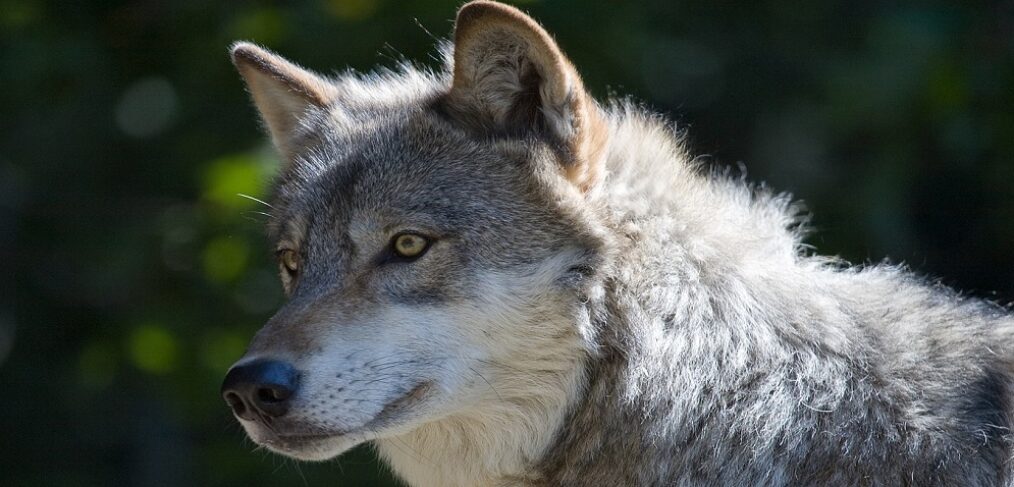
species of the week #28 – wolf
Most species of the week are rather unknown species that need to be made known first. Not so the wolf, he is probably the most “political” animal and offers a lot of discussion material for years. Without question it is a strictly protected species whose right to exist is undisputed.
| Distribution status | Was extinct in Rhineland-Palatinate, since 2018 isolated sightings in the Westerwald, now settled in the Westerwald, individual records in the Eifel |
| Remaining deposits | Saxony, Brandenburg, Saxony-Anhalt, Lower Saxony |
| Last sighting in Rhineland-Palatinate | March 2019 |
| Habitat | Large forests and grasslands |
| Threat of | hunting, habitat fragmentation, road traffic |
The European wolf becomes 70 to 90 centimeters large (shoulder height) and up to 140 centimeters long. Optically, it resembles a big house-dog. As a large carnivore, its prey consists mainly of roe deer, red deer and wild boar. But also smaller animals are on the menu. The wolf hunts especially older, sick or young animals, since they are easy prey. So the wolf takes over its role in the ecosystem again by controlling the populations of especially the medium-sized game animals. The lack of large predators – combined with winter feeding – has led to very high game populations in our forests. This disturbs the natural regeneration of the forest. However, if grazing animals like sheep or goats are not sufficiently protected, it can happen that the wolf makes prey here as well. Here protection fences and herd protection animals like French Pyrenean mountain dogs and Maremmano-Abruzzese help.
Wolves are extremely adaptable and once populated the entire northern hemisphere. Since wolves were put under strict protection in Germany and almost all of Europe in 1990, more and more animals are returning to their former distribution areas with their now abundant game populations. In 2019, 101 wolves died prematurely nationwide, 94 of them in road traffic, 7 were killed illegally. Currently there are 105 wolf packs nationwide, 25 pairs of wolves and 13 territorial single wolves.
In Rhineland-Palatinate only single animals had immigrated at first; in 2019 a mother with five puppies was proven in the Westerwald (district Neuwied). Current proofs are listed by the Foundation Nature and Environment here
The most suitable habitats would be in the biosphere reserve Palatinate Forest / Northern Vosges and in the Eifel. Wolves avoid contact with humans and usually retreat without humans even noticing, because they can smell animals and humans from a distance of 2.5 kilometers.
Politically necessary:
– Comprehensive and early wolf management and herd protection program
– Reconnection of habitats
– Traffic Turnaround
Picture: From dalliedee – Gray Wolf II, CC BY 2.0, https://commons.wikimedia.org/w/index.php?curid=37608983
